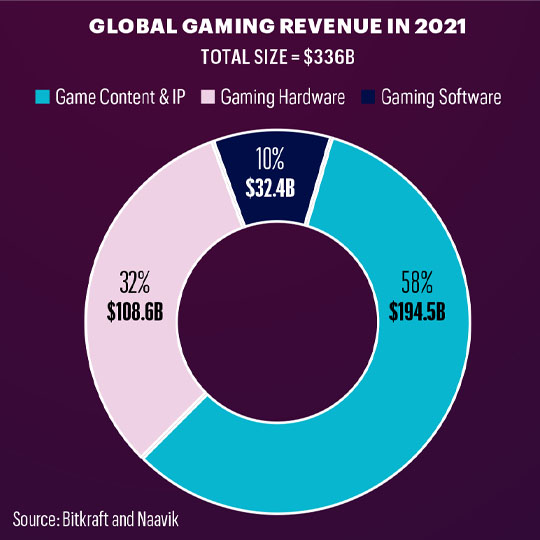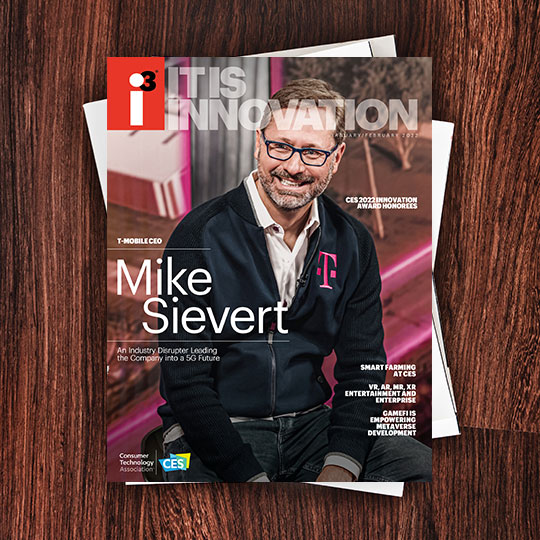
Global Gaming Revenue in 2021
Total size = $336B
Game Content & IP: 58% and $194.5B
Gaming Hardware:
32% and $108.6B
Gaming Software:
10% and $32.4B
Source: Bitkraft and Naavik
Gaming Market Stats
Game content and IP ($193.3B) is more than double the combined size of gaming hardware and gaming software ($85.4B).
Within game content and IP, mobile gaming content ($79.1B) is almost as large as PC and console gaming content combined ($82.5B).
Grey market game sales ($11.5B) — the trade of video game systems, games or virtual items through unintended or unofficial methods — are estimated to be almost twice as large as several more highly publicized segments (VR gaming content = $3B; AR gaming content = $0.5B; HTML5 gaming content = $2.6B).
All of blockchain gaming ($1.5B) is today “only” roughly 10% of the size of grey market game sales, albeit growing rapidly. The introduction of digital ownership via NFTs suggests blockchain games could potentially eat into the large grey market.
PC gaming hardware ($42.9B) is significantly larger than console hardware ($24.8B), despite recent successes of Sony Playstation 5, Microsoft Xbox One, and Nintendo Switch.
The Esports ($1.1B) and Game Engine ($1.9B) markets are still relatively small in comparison to the overall gaming industry.

“It’s more accurate to think of blockchain’s application in gaming as a collection of composable micro services that allow for novel player experiences.”
–Mark Long

We see the fundamental importance of a connected series of metaverses to be based in the actual ownership of digital goods.”
–Joe Minton

"The framework for game creators is actually quite simple: make games people want to play, and leverage crypto’s unique financial incentive structures to attract and retain an early community of players and contributors.”
–Ben Perszyk

I3, the flagship magazine from the Consumer Technology Association (CTA)®, focuses on innovation in technology, policy and business as well as the entrepreneurs, industry leaders and startups that grow the consumer technology industry. Subscriptions to i3 are available free to qualified participants in the consumer electronics industry.